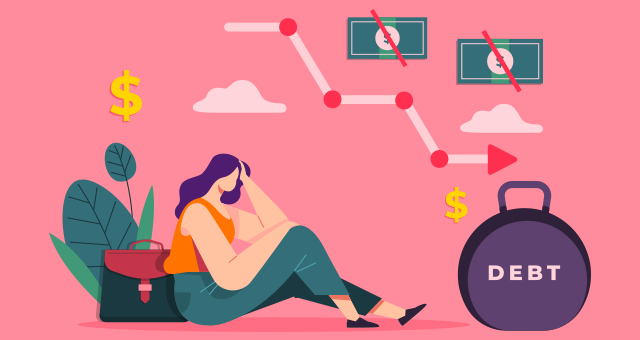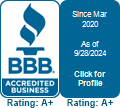
Understanding Interest Rates: The Hidden Costs of Debt in Today’s Market
With rising interest rates shaping the economic landscape in 2024, it is critical to know how these changes impact personal and national debt. Whether you are a homeowner, a borrower, or someone managing credit card debt, the effects of today’s high rates are everywhere—and they carry hidden costs that can burden finances in many unexpected ways.
The Current Interest Rate Landscape: Why Are Rates So High?
The Federal Reserve’s sharp interest rate hikes in 2022 and 2023, aimed at reducing high inflation, have left rates at nearly a 20-year high of 5.25–5.5% as of 2024. Inflation has eased somewhat, but the Fed’s stance on maintaining elevated rates signals a commitment to long-term stability. For consumers, these higher rates translate to more costly borrowing, affecting everything from mortgages to personal loans and credit cards.
How Inflation Affects Borrowing
High inflation impacts the cost of essentials like groceries, gas, and utilities. As the cost of living rises, borrowing becomes less affordable, adding strain to many households. Although inflation is slowly moderating, the high-rate environment means consumers will likely feel this impact in the coming years.
Impact on Everyday Borrowing: How Elevated Rates Affect Consumers
Today’s high rates mean increased borrowing costs across the board. Credit card interest rates now average around 21%, up from roughly 16% just a few years ago, adding hundreds—or even thousands—of dollars in annual interest for those who carry balances. Mortgage rates have also surged, with a 30-year fixed mortgage averaging close to 8%, significantly impacting homebuyers and those considering refinancing.
Example: Imagine a $5,000 balance on a credit card at a 21% interest rate. If you only make the minimum payments, you’ll pay about $1,050 in interest over a year—compared to around $800 at pre-2023 rates of 16%. It demonstrates how even small rate increases can have financial implications. If you only make minimum payments, you could pay more than double the original balance in interest alone, highlighting the impact of compounding interest over time.
National Debt and the Federal Budget Strain
It’s not just consumers feeling the weight of high interest rates; the federal government is also feeling it. According to projections from the Congressional Budget Office (CBO), interest payments on U.S. national debt can reach an unprecedented high by 2025. For 2024, these payments can hit approximately $892 billion—nearly as much as defense spending and larger than expenditures on many social programs.
Implications for Taxpayers
Rising debt obligations may lead to increased taxes or reduced funding for public services. As interest payments take up more of the federal budget, there’s less available for programs that benefit taxpayers. It could also mean fewer public investments in infrastructure and education.
The Impact on Variable vs. Fixed-Rate Debts
Understanding the difference between variable and fixed-rate debts is essential. High rates affect these types of loans differently:
- Variable-Rate Loans: Many credit cards and few personal loans have variable rates, which means they adjust over time according to changes in the Fed’s benchmark rate. It can lead to unpredictable costs, as monthly payments may increase with each rate hike.
- Fixed-Rate Loans: Fixed-rate loans, like some student or personal loans, maintain a consistent rate throughout the loan’s term, offering more stability. Knowing whether your debt is variable or fixed is essential for managing monthly expenses, as variable rates could increase unexpectedly.
Debt Relief Options That Can Shield You from Rising Rates
Several debt relief options may offer stability and potential savings in a high-rate environment:
- Fixed-Rate Debt Consolidation Loans: Consolidating multiple debts into a single fixed-rate loan can help you manage monthly payments with a consistent rate, which can be beneficial when rates are on the rise.
- Balance Transfers with 0% APR Promotions: For those with high credit card debt, transferring balances to a card with a 0% APR promotion can give temporary relief with interest charges. Have a repayment plan before the promotional period ends to avoid high rates afterward.
Proactive Steps to Take Before Interest Rates Climb Higher
With the potential for additional rate hikes, now is the time to take proactive steps to manage your debt effectively:
- Refinance High-Interest Debts: Consider refinancing high-interest debts, such as personal loans, before further rate increases. A lower rate could save you significant money over time.
- Boost Monthly Payments to Counteract Rising Interest Costs: Even small increases in your monthly payments can help reduce the principal balance faster, minimizing the effect of rising interest costs.
Reassessing Financial Goals in a High-Interest Environment
In a high-rate landscape, adjusting financial goals can help maintain stability and reduce financial strain:
- Prioritize Debt Repayment Over New Loans: The cost of borrowing is at record highs, so prioritizing paying down existing debt can prevent future financial stress. Avoid taking on new debt unless necessary.
- Balancing Saving Goals with Debt Reduction: While saving is crucial, paying down high-interest debt yields a “return” in the form of saved interest costs. Balancing debt reduction and saving can be beneficial for achieving long-term financial security.
What Is Next? Preparing for Future Rate Changes
While some economists anticipate potential rate cuts in late 2024 or early 2025 if inflation continues to come down, it can be challenging to predict changes. Staying informed and considering the long-term impact of rate fluctuations on debt is essential for managing today’s high-rate environment.
Tip: Look for opportunities to reduce high-interest debt, such as paying down balances aggressively and avoiding new debt if possible. By managing debt carefully now, you can better navigate future rate changes.
WRAP-UP
As interest rates remain elevated, it is essential to understand their impact on personal and national debt. Rising rates make borrowing more expensive, restrict federal budgeting, and affect our financial decisions. By grasping these hidden costs, you can make informed choices about managing debt in a high-rate environment, ultimately positioning yourself for more economic stability. For those carrying high-interest debt, especially variable-rate debt, now is a prime time to explore debt relief options and proactive strategies to ease the burden.


